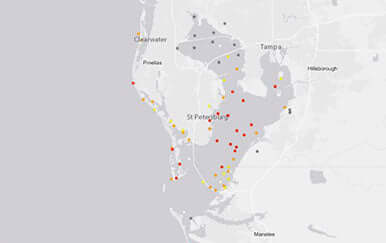Understanding how tide and the relationship with the cycles of the moon can mean the difference between a no hitter or a grand slam
Tidal changes have a large impact on fish feeding activity in saltwater inshore bay and estuary areas. Fish will generally move towards shallow flats or shorelines to feed on a rising or incoming tide. As the tide goes out, fish tend to follow the current toward deeper waters. When fishing saltwater inshore areas, this simple rule of thumb will help you find feeding fish.
The best tides for fishing offshore can be either incoming or outgoing. While the current is moving, you will have a good chance at catching fish. Many offshore anglers believe that the periods just before a full moon tend to be the most productive due to stronger tides and currents that result from the increased gravitational pull.
While tidal changes may not be as obvious when fishing offshore, tidal changes do have an impact on deep sea fishing conditions as well — just keep in mind that weather and wind current can overpower tidal flow when you’re out in the blue waters. During periods of slack tide, offshore currents aren’t as strong and bait fish are better able to escape from predatory game fish. However, once the tide begins to move, bait fish are swept along with the strong currents, making it easier for game fish to locate and pursue their prey









